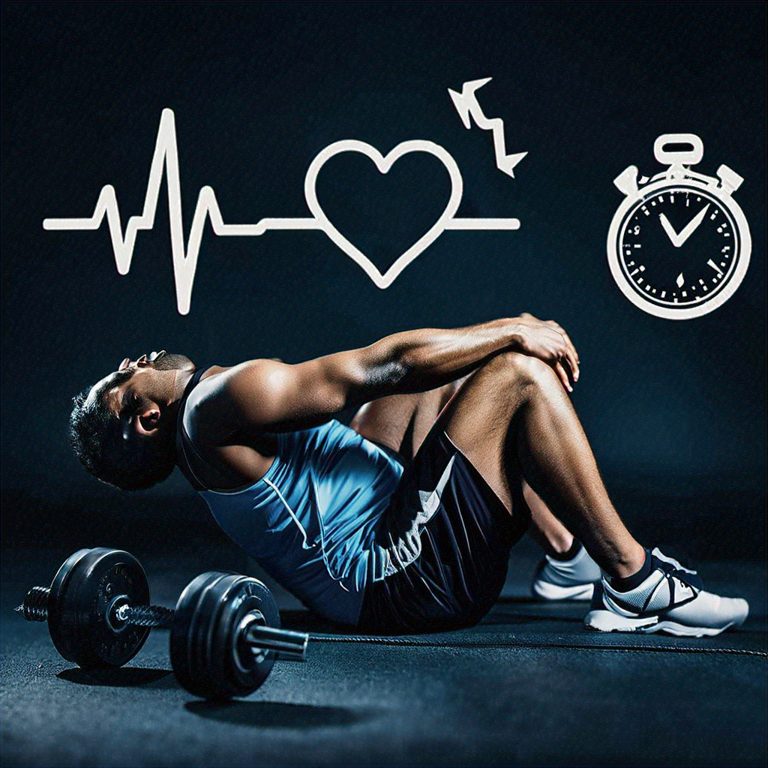
Overtraining Alert: Recognize the Key Signs
I’ve seen the thrill of reaching new heights in the gym. But, there’s a flip side: the risk of overtraining. Recognizing workout burnout is crucial; it’s your body waving a red flag. Let’s tune in to its frequency. I’ll guide you through spotting the signs of overtraining, understanding overtraining symptoms, and providing overtraining prevention strategies.
Training should energize, not leave you drained. There’s a fine line between intense workouts that promote growth and those leading to burnout. Together, we can walk that line expertly to avoid falling into the overtraining trap. It’s all about knowing the limits and listening to your body’s whispers before they turn into screams.
Let’s keep it simple, keep it smart. By recognizing the warning signs early on, we can prevent workout burnout. After all, fitness is a marathon, not a sprint. It requires a strategy that balances exertion with recovery—a recipe for a successful, injury-free fitness journey.
Key Takeaways
- Pay attention to your body and the signs it gives you.
- Know that overtraining can be a silent progress killer.
- Implement rest and recovery as key elements of your regimen.
- Keep informed about overtraining to exercise effectively and safely.
- Strike the right balance between intense workouts and adequate rest.
- Consult professionals for tailored overtraining prevention strategies.
Understanding Overtraining and Overuse Injuries
As someone deeply immersed in the fitness world, I see the dedication athletes pour into their training. But there’s a dark side that lurks behind the sweat and adrenaline: overtraining. It’s my job to help you navigate this tricky terrain.
So let’s dive into what overtraining is and how it can lead to overuse injuries, such as tendonitis or plantar fasciitis.
Defining Overtraining in the Fitness World
Overtraining in athletes isn’t just about sore muscles. It’s a systemic issue where both the body and mind suffer from excessive exercise without enough rest. It’s the point where your metabolic engine overheats and your psychological drive sputters.
My goal is to keep you from crossing that line by equipping you with the knowledge to spot and avoid overtraining.

How Repetitive Stress Leads to Overuse Injuries
When considering overuse injuries, we’re talking about the silent culprits of an athletic regime gone awry. These injuries often arise from training errors—pushing too hard, too fast, without the right technique or sufficient recovery time.
Repetitive trauma from flawed execution can trigger stress fractures in athletes, a painful telltale sign of excessive wear and tear. Technique adjustments are not just about performance optimization; they are also pivotal in injury prevention. I always emphasize to my clients that the key to robust training is pacing, mechanical correctness, and rest.
Think of your body like a finely-tuned instrument. Play it with technique and care, and it’ll reward you with harmonious results. Disregard its needs for balance and recalibration, and it’s only a matter of time before the strings snap—the result being conditions like tendonitis or the dreaded sole-stabbing plantar fasciitis.
I’m here to help you compose a training symphony that’s sustainable and sweet to the ears of your body’s innate wisdom.
The Physical Toll: How Overtraining Affects Your Body
I’m in the gym daily, spotting the strain on faces and the fatigue in slumped postures. They’re battling the physical signs of overtraining, and it’s my job to intervene.
When a member who used to breeze through sets now grimaces in pain, it’s clear: overtraining has taken its toll. Their decrease in athletic performance is no badge of honor; it’s a distress signal.
What got you here won’t get you there. That’s what I tell them. Adding more weight or miles isn’t always the answer. When usual workout soreness turns into chronic aches, and speed and stamina drop unexplainably, it’s time to reassess.

Overtraining doesn’t whisper, it roars, in a language of constant fatigue, compelling athletes to push even harder. This paradox can spiral into a serious decline, flipping progress on its head. But when I step in, we talk about recovery from overtraining—about rest being as crucial as the reps. Continuity matters, but so does caution.
- Listen to the whispers of unusual muscle soreness
- Watch for that edge where exertion crosses into excess
- Rest and recover—it’s non-negotiable
Overtraining recovery isn’t a quick fix; it’s a careful recalibration that might take weeks, perhaps months. It’s also about smarter, not just harder, work. A hard truth, but one that can turn a painful today into a triumphant tomorrow.
| Signs of Overtraining | Impact on Performance | Recovery Strategies |
|---|---|---|
| Persistent muscle soreness | Decreased strength and endurance | Structured rest periods |
| Heavy-leggedness | Slower sprint times | Cross-training activities |
| Mental fatigue | Loss of motivation | Mental health days and hobbies |
In my book, every training day should end with enough left in the tank to face tomorrow head-on. Spotting the physical signs of overtraining early leads to a timely recovery and a return to peak performance. And that’s a win in anyone’s logbook.
Preventing Overtraining with Proper Techniques and Equipment
Understanding that fine line between effective training and overtraining is essential. As a seasoned bodybuilder and trainer, I can’t stress enough the importance of proper exercise techniques and the role of equipment in training.
It’s not just about lifting more weights or running more miles; it’s also about how you do it and with what gear. So let’s break down the fundamentals for avoiding training mishaps.

The Role of Gear and Form in Overtraining Prevention
Every movement, every lift, and every stride counts. That’s why I always emphasize to my clients the critical nature of executing each action with precision, adhering to injury prevention strategies.
Poor form is a one-way ticket to strain and injury, but it is avoidable. By ensuring that every squat, press, and run is performed as intended, you shield your body against the risks of repetitive stress injuries.
Gearing Up for Success: Ensuring Correct Equipment Fit
When we talk about equipment fit for athletes, we’re getting down to the nitty-gritty of successful workout planning. From the sneakers hugging your feet on a long-distance run to the gloves protecting your hands during a boxing session, if the fit isn’t right, the risk of injury skyrockets. Just like a tailor-made suit, your training gear must be tailored to your unique physique to support and enhance your performance.
Let’s not forget, the health of your body echoes the quality of your tools—this means the staples in your gym bag should be more than just branded items; they need to be fitted to perfection.
Taking that extra time to find the ideal fit for your physique pays dividends in keeping your training on track and keeping those overtraining gremlins at bay. Remember, prevention is always better than needing to pause for recovery.
- Invest in high-quality gear that corresponds to your sport’s specific demands.
- Don’t skip on proper form, even if it means scaling back the intensity for a while.
- Regularly reassess both technique and equipment as your body and skills evolve.
In my practice, meticulous attention to these aspects ensures my clients thrive without the setback of training-related injuries. So lace up those sneakers, adjust that helmet, and grip that racquet with the confidence that comes from knowing you’re well-protected and well-prepared. Let’s keep the focus on progress, not on setbacks.
BUY HIGH QUALITY GEAR EQUIPEMENT
Strategic Training: The Balance Between Intensity and Rest
In my career as a natural bodybuilder and personal trainer, I’ve drilled deep into the strategies of workout planning. I’ve learned that a harmonious balance in training is essential for peak performance—this is non-negotiable. This balance isn’t just about alternating muscle groups; it’s about integrating strength, endurance, flexibility, and recovery in a way that promotes sustainable progress. One key area I emphasize with my clients is mastering bodyweight exercises, where advanced calisthenics routine tips can significantly enhance functional fitness and total body control. By focusing on proper form and gradual progression, these techniques help unlock untapped potential while reducing the risk of overtraining.
Micro-managing your training involves fine-tuning the intensity, recognizing the need for active recovery, and, yes, even relishing those days of rest. Our bodies aren’t designed for a relentless barrage of workouts. But by adopting strategic workout planning that marries exertion with rejuvenation, we step away from the perilous edge of overtraining syndrome.
Avoiding workout burnout is not just about tossing in a rest day when you’re feeling spent. It’s about crafting a balanced regimen that factors in rest as a core ingredient for success. It’s recognizing that not every gym day is meant for breaking lift records or pounding the treadmill till you’re gasping.
Some days are about mobility work, perhaps yoga or a leisurely bike ride—anything that aids recovery while keeping the body in motion. It’s about keeping your eyes on the long-term prize, not just the immediate burn.
Above all, listening to my body has been my greatest teacher. When it whispers for a breather, I’ve learned to heed that call with the same discipline I give to my workout schedule. This attentiveness steers me clear of the burnout zone, allowing for adaptation and growth.
Embrace the wisdom that comes from balance, and watch how it propels you towards your goals with a vigor that’s both sustainable and invigorating. You’ll not only feel better but perform better—now, isn’t that what we’re all after?

FAQ
What Are the Signs of Overtraining?
The signs of overtraining can be both physical and psychological, including persistent muscle soreness, fatigue, decreased performance, insomnia, reduced immunity, mood swings, and loss of motivation. If you’re continually feeling exhausted and not making progress despite intense training, these may be warning signs of overtraining syndrome.
How Can I Distinguish Between Regular Soreness and Overtraining Symptoms?
Regular soreness is typically acute and follows a hard workout, known as delayed onset muscle soreness (DOMS), and usually subsides within a few days. Overtraining symptoms persist over a longer period and may include chronic tiredness, a decrease in athletic performance, and a feeling of burnout. If rest doesn’t alleviate these symptoms, it could be a sign of overtraining.
What Constitutes Overtraining in the Fitness World?
Overtraining occurs when there’s an imbalance between training and recovery; when exercise intensity or volume exceeds the body’s capacity to recover. It can lead to overtraining syndrome, which negatively impacts performance and can cause long-term health issues.
How Do Repetitive Stress and Training Errors Lead to Overuse Injuries?
Repetitive stress from overuse of specific muscles or joints, without adequate time to heal, can lead to overuse injuries such as tendonitis or stress fractures. Training errors such as improper technique or rapidly increasing workout intensity without proper conditioning contribute to these types of injuries.
What Are the Physical Signs of Overtraining?
Physical signs of overtraining include extended muscle soreness, increased occurrence of injuries, longer recovery times, decrease in performance, and general exhaustion. If you are experiencing these symptoms, your body is signaling that it needs more time to recover.
How Can Proper Techniques and Equipment Prevent Overtraining?
Employing proper exercise techniques ensures that you’re working your muscles effectively without overloading them. Using the right equipment that’s fitted appropriately for your body type and training needs can prevent unnecessary strain and reduce the risk of injury.
Why Is Ensuring the Correct Equipment Fit So Important?
Correct equipment fit is essential to provide adequate support and avoid additional strain on your body. Whether it’s footwear that prevents plantar fasciitis or weights that are the right size for your strength level, proper fit can significantly reduce the likelihood of overtraining and injury.
How Does Balance Between Intensity and Rest Contribute to Strategic Training?
Maintaining a balance between workout intensity and rest is crucial for preventing overtraining. Strategic training involves planning workouts so they progressively challenge the body, interspersed with sufficient rest and recovery periods. This approach helps ward off the physical and mental signs of workout burnout.



